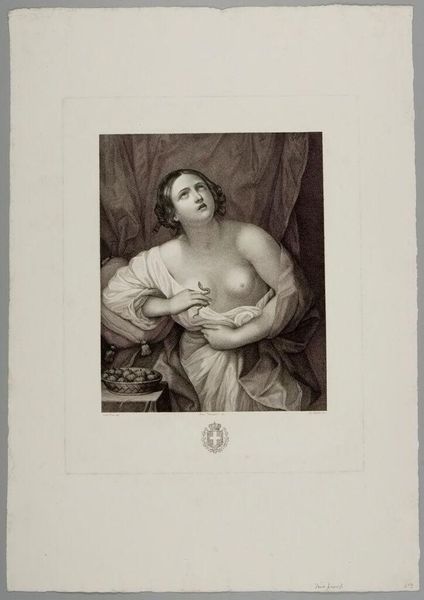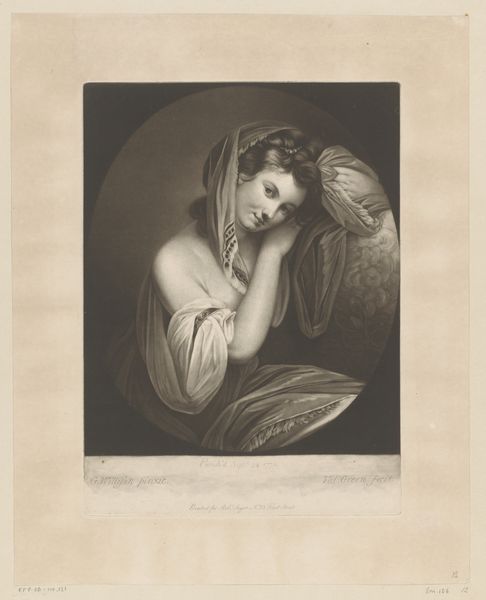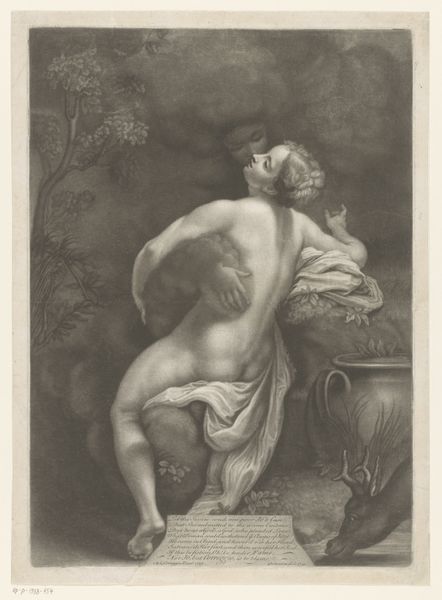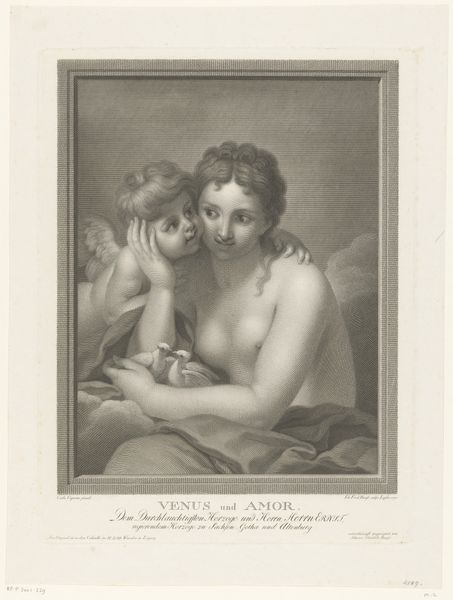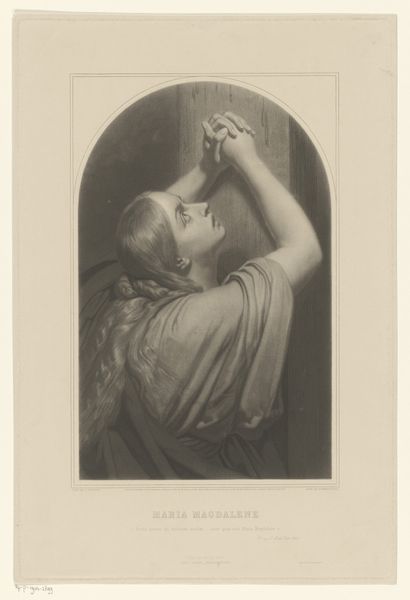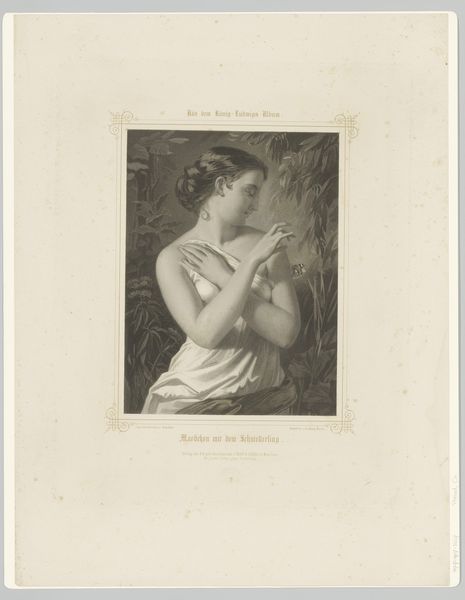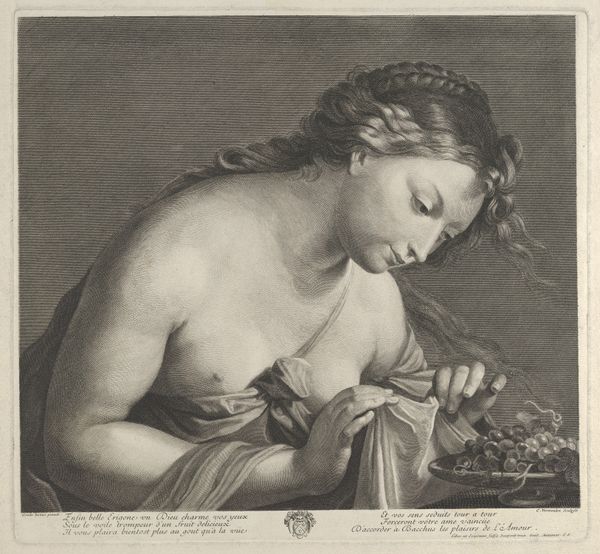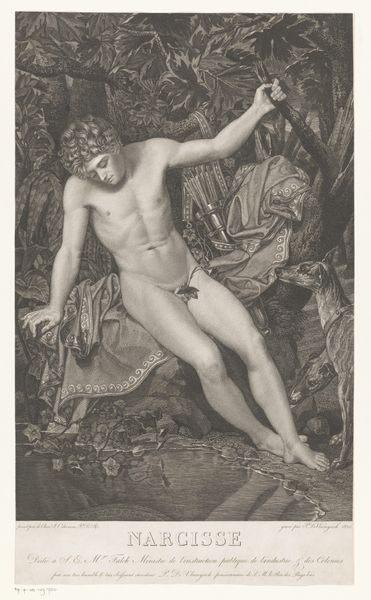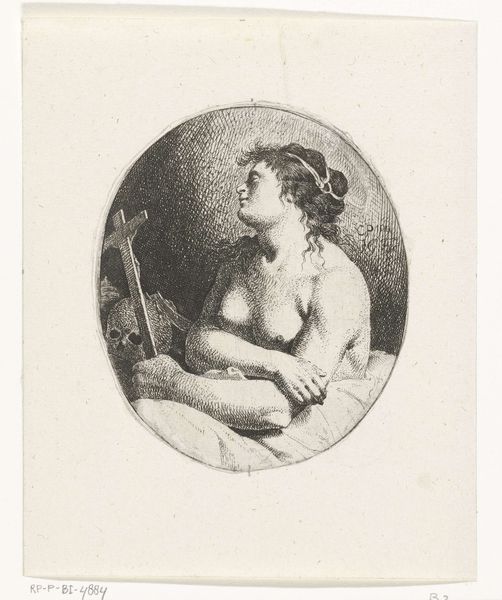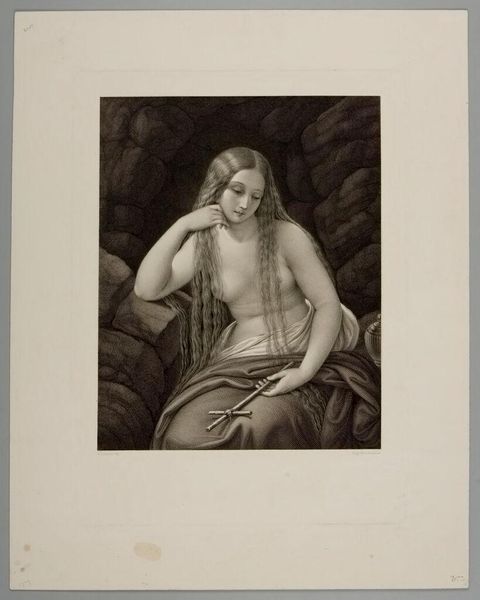
Cleopatra looking upwards while holding an asp in her right hand and clutching at her stomach with her left, a bowl of figs at left, after Reni 1791 - 1801
0:00
0:00
Dimensions: Sheet: 14 13/16 in. × 12 in. (37.7 × 30.5 cm) Plate: 13 3/4 × 10 13/16 in. (35 × 27.5 cm)
Copyright: Public Domain
Curator: Looking at this, my first thought is drama, pure melodrama! That upward gaze, the clutching, even the fruit seems to have a theatrical quality. Editor: Precisely. Here we have a print created sometime between 1791 and 1801, attributed to Giovanni Rivera, after Guido Reni. The work presents Cleopatra in her final moments. Curator: Attributed... Ah, the mystery! Does knowing it’s a copy change things, do you think? Does it diminish the impact, or amplify it, considering how Reni himself interpreted this potent historical moment? I see tragedy, of course, but also a strangely posed sort of... release. The asp seems less a harbinger of death and more of, shall we say, a tiny key. Editor: That’s a provocative take! It's important to consider that imagery of Cleopatra, especially in the Baroque and Neoclassical periods, was as much about exploring ideas of female power and its potential dangers as it was about historical accuracy. The composition highlights that tension. Her beauty versus her demise. Curator: The era's obsession with grand gestures and moral lessons! Yet, even filtered through that lens, her gaze is mesmerizing. As if she’s not simply meeting her fate, but searching for something beyond. I feel there's an internal dialogue there. The serpent is a full stop in a sentence. Editor: Indeed. Reproductions like this, circulated widely, played a crucial role in shaping public understanding and reception of both classical history and artistic style. It reinforced, or even helped define Cleopatra's image in popular culture. The bowl of figs alludes both to erotic and funerary meanings in different interpretive traditions. Curator: So, it’s a carefully curated death, even in its reproduced form. Which makes me wonder…did she find what she was looking for? Freedom? Oblivion? Or simply, a quiet sort of sleep in that searching upward glance. Editor: The ambiguity, perhaps, is the point. And what speaks to its continuing power, long after its creation, even in simple pencil and graphite. Curator: So very true! I come away thinking about her story and feeling something beyond pity; and maybe even hope and inspiration as well. Editor: Absolutely. It really goes to show the enduring power of mythmaking and artistry across generations.
Comments
No comments
Be the first to comment and join the conversation on the ultimate creative platform.
